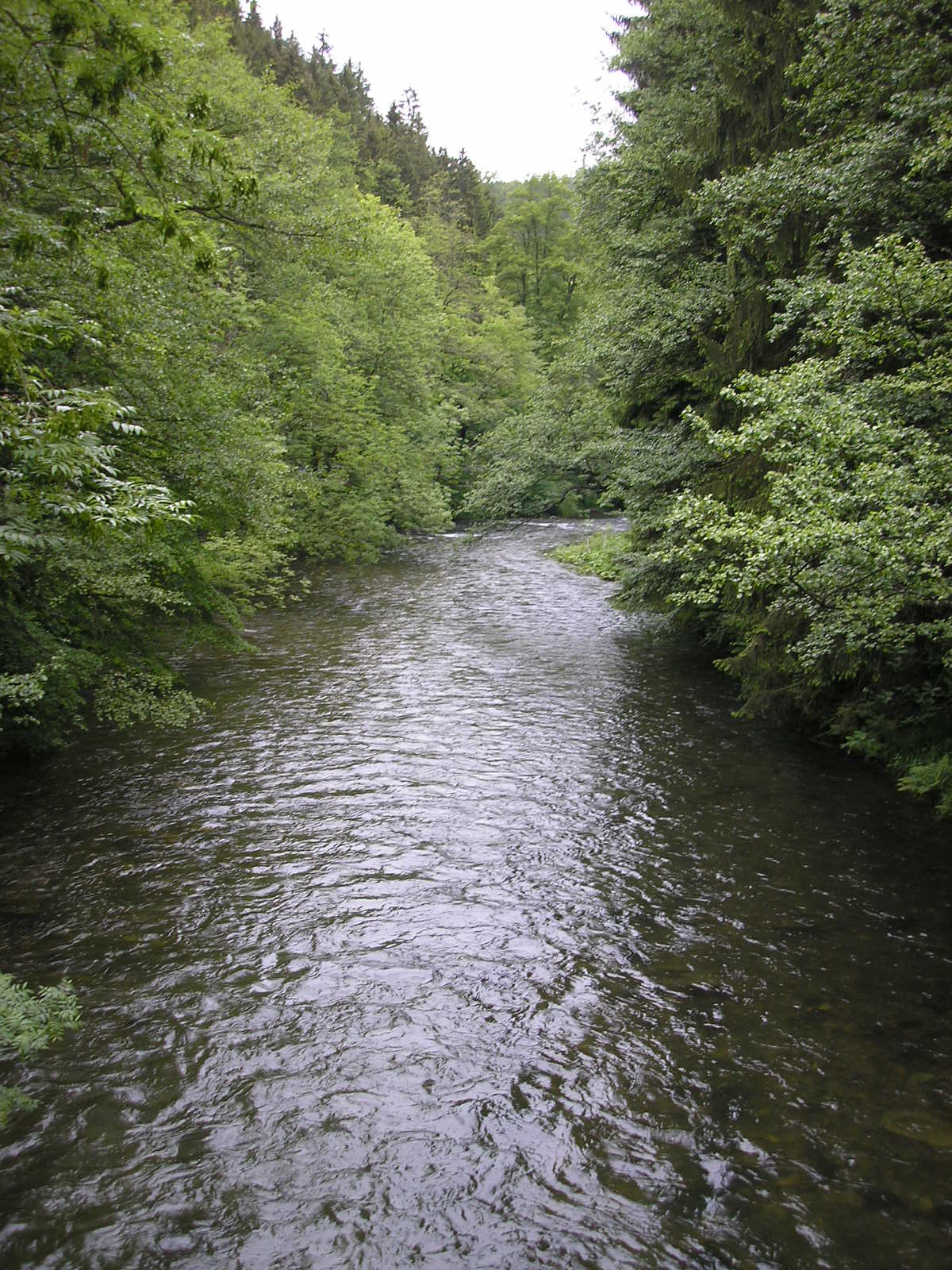Schwarza (Saale) on:
[Wikipedia]
[Google]
[Amazon]
The Schwarza is a left  The Schwarza river is the richest in
The Schwarza river is the richest in
Goldwäscherei
tributary
A tributary, or an ''affluent'', is a stream or river that flows into a larger stream (''main stem'' or ''"parent"''), river, or a lake. A tributary does not flow directly into a sea or ocean. Tributaries, and the main stem river into which they ...
of the Saale
The Saale (), also known as the Saxon Saale ( ) and Thuringian Saale (), is a river in Germany and a left-bank tributary of the Elbe. It is not to be confused with the smaller Fränkische Saale, Franconian Saale, a right-bank tributary of the M ...
in Thuringia
Thuringia (; officially the Free State of Thuringia, ) is one of Germany, Germany's 16 States of Germany, states. With 2.1 million people, it is 12th-largest by population, and with 16,171 square kilometers, it is 11th-largest in area.
Er ...
, central Germany
Germany, officially the Federal Republic of Germany, is a country in Central Europe. It lies between the Baltic Sea and the North Sea to the north and the Alps to the south. Its sixteen States of Germany, constituent states have a total popu ...
.
The Schwarza is long. Its source is in the Thuringian Forest
The Thuringian Forest (''Thüringer Wald'' in German language, German ) is a mountain range in the southern parts of the Germany, German state of Thuringia, running northwest to southeast. Skirting from its southerly source in foothills to a gorg ...
, near Neuhaus am Rennweg
Neuhaus am Rennweg is a town in the district of Sonneberg, in Thuringia, Germany. It is situated in the Thuringian Forest, 17 km north of Sonneberg, and 22 km southwest of Saalfeld. The former municipalities Lichte
image:Wallendorfe ...
. It flows into the Saale in Rudolstadt. Other towns on the Schwarza are Schwarzburg and Bad Blankenburg
Bad Blankenburg () is a spa town in the district of Saalfeld-Rudolstadt, in Thuringia, Germany. It is situated 6 km southwest of Rudolstadt, and 37 km southeast of Erfurt. It is most famous for being the location of the first kinderga ...
. It has 50 tributaries
A tributary, or an ''affluent'', is a stream or river that flows into a larger stream ('' main stem'' or ''"parent"''), river, or a lake. A tributary does not flow directly into a sea or ocean. Tributaries, and the main stem river into which the ...
, the largest being the Lichte
image:Wallendorfer Porzellan Manufaktur.jpg, 220px, Wallendorfer Porcelain Manufacture, Oct. 2006
image:Talsperre Leibis Lichte in August 2009.jpg, 220px, Leibis-Lichte Dam, 102.5 m high
Lichte is a village and a former municipality in the Sonn ...
, the Sorbitz, the Werre and the Rinne. Its name, meaning "black river", comes from its dark colour in its upper course and the thick forest which originally overshadowed the narrow valley.
The Schwarza valley () parallels the axis of the Schwarzburg anticline
In structural geology, an anticline is a type of Fold (geology), fold that is an arch-like shape and has its oldest Bed (geology), beds at its core, whereas a syncline is the inverse of an anticline. A typical anticline is convex curve, c ...
(''Schwarzburger Sattel''), a structure that divides the Thuringian Forest to the northwest from the Thuringian Highland to the southeast. The Schwarzburg Anticline was created by the collision between Laurentia
Laurentia or the North American craton is a large continental craton that forms the Geology of North America, ancient geological core of North America. Many times in its past, Laurentia has been a separate continent, as it is now in the form of ...
and Gondwana
Gondwana ( ; ) was a large landmass, sometimes referred to as a supercontinent. The remnants of Gondwana make up around two-thirds of today's continental area, including South America, Africa, Antarctica, Australia (continent), Australia, Zea ...
around 350 million years ago. The rock of the Schwarzburg Anticline is metamorphic, with a core of ordovician
The Ordovician ( ) is a geologic period and System (geology), system, the second of six periods of the Paleozoic Era (geology), Era, and the second of twelve periods of the Phanerozoic Eon (geology), Eon. The Ordovician spans 41.6 million years f ...
rock, largely quartzite
Quartzite is a hard, non- foliated metamorphic rock that was originally pure quartz sandstone.Essentials of Geology, 3rd Edition, Stephen Marshak, p 182 Sandstone is converted into quartzite through heating and pressure usually related to tecton ...
. The river is geologically unusual for the large number of kolks in its lower course.
gold
Gold is a chemical element; it has chemical symbol Au (from Latin ) and atomic number 79. In its pure form, it is a brightness, bright, slightly orange-yellow, dense, soft, malleable, and ductile metal. Chemically, gold is a transition metal ...
in Germany, and its valley has been known for its deposits of placer gold since the 12th century. In 1442, the rights to the gold deposits of the Schwarza valley were granted to the Counts of Schwarzburg. Recreational placer miners continue to find occasional gold nuggets in the Schwarza to this day.Rich. Christian KreibichGoldwäscherei
See also
*List of rivers of Thuringia
A list of rivers of Thuringia, Germany:
A
*Alster
* Apfelstädt
* Ascherbach
* Auma
B
* Biber
* Bibra
* Blambach
* Bode
* Breitenbach
* Breitstrom
D
* Dammbach
* Deube
* Dober
* Dürrbach
E
* Effelder
* Eichbach
* Ellenbach
* Eller
* Els ...
References
{{Authority control Rivers of Thuringia Rivers of Germany